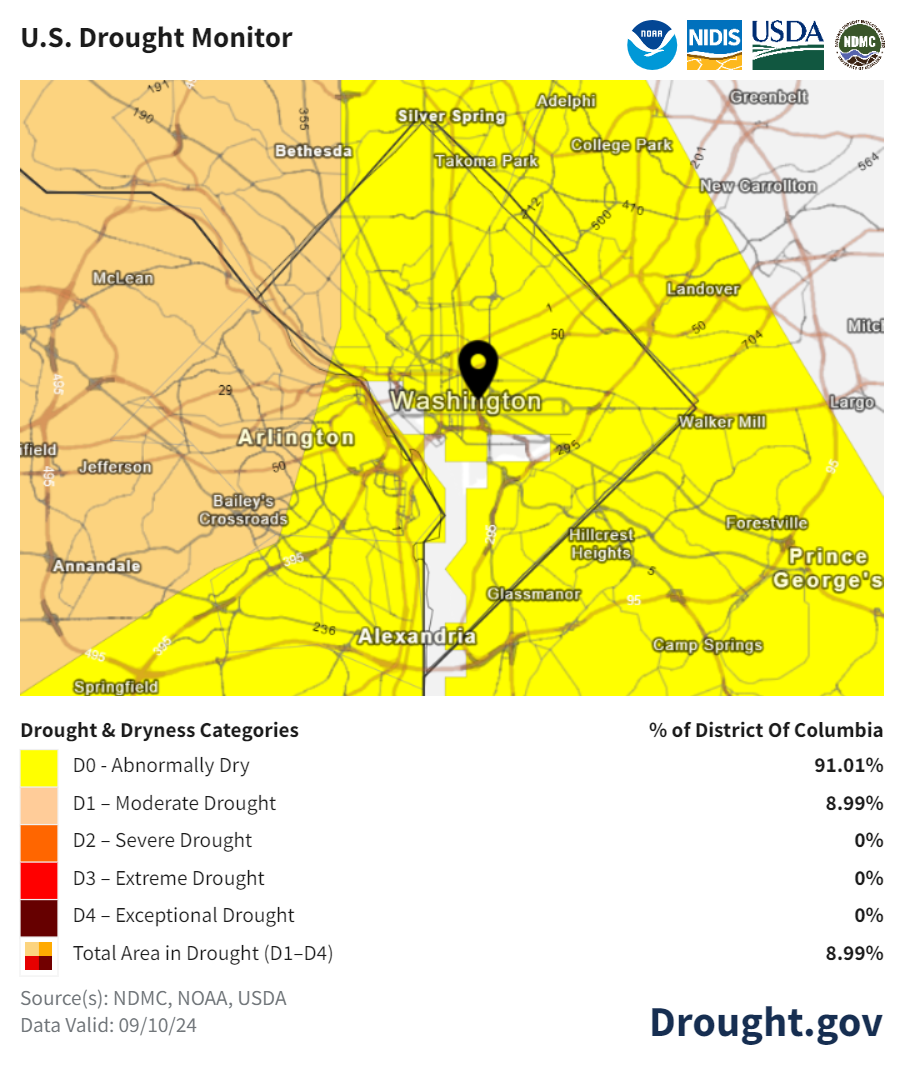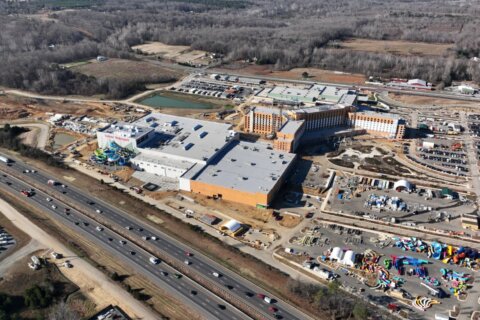It’s dry out there. Abnormally dry. So dry that the federal U.S. Drought Monitor has declared that western parts of the D.C. region are in a “moderate drought.”
But will the trace amounts of rain in September affect the local drinking water supply? Unlikely, says the Interstate Commission on the Potomac River Basin (ICPRB).
According to a Thursday report from the U.S. Drought Monitor, portions of Fairfax, Loudoun and Montgomery counties are in “moderate drought,” while most areas in Virginia and much of Maryland’s Eastern Shore are considered “abnormally dry,” but not in a drought.

Despite the drought conditions, the area’s drinking water supply is currently stable and is unlikely to require the release of upstream reservoirs into the Potomac River to supplement the Washington area’s water supply.
The ICPRB, which coordinates with regional water companies, says daily drought monitoring began this week of a river flow gage at Point of Rocks, Maryland, which is upstream of Potomac River intakes for the Washington Aqueduct, WSSC Water and Fairfax Water.
In its Thursday report, ICPRB said the Potomac River basin upstream of Washington, D.C. got above-normal amounts of rain in August, and “streamflow is currently near normal.”
Daily drought monitoring began on Sept. 11, due to river flow dropping below the 2000-cubic-feet-per-second threshold, but ICPRB does not believe extraordinary steps will need to be taken.
“At present, there is sufficient flow in the Potomac River to meet the Washington metropolitan area’s water demands without releasing water from upstream reservoirs,” wrote ICPRB.
If drought conditions worsen, the region’s water companies share three reservoirs.
The nearest is Little Seneca Reservoir, located in Black Hill Regional Park in Boyds, Maryland, in Montgomery County.
It would take about one day for water released into the Potomac to reach downstream intakes for Fairfax Water, WSSC Water and the Washington Aqueduct, and be processed as drinking water.
Miles upstream, the larger Jennings Randolph Lake, straddling Maryland and West Virginia, and the Savage River Reservoir, in northwest Maryland, can be tapped.
Reservoir releases were most recently needed in 2010, 2002 and 1999.
Get breaking news and daily headlines delivered to your email inbox by signing up here.
© 2024 WTOP. All Rights Reserved. This website is not intended for users located within the European Economic Area.








